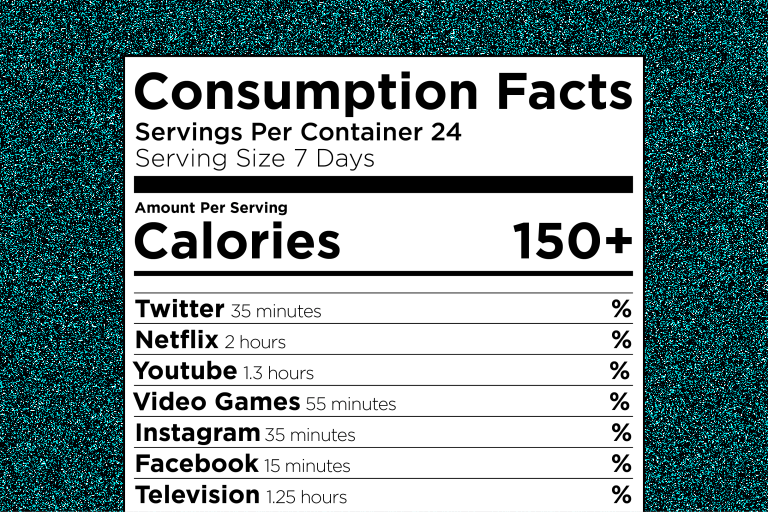Watching television while eating has been a guilty pleasure since the 1950s, when families began peeling back the tin foil on TV dinners. But the effects of simultaneously consuming food and media has become something to watch, too, as more people than ever struggle to keep off the pounds.
Researchers at Michigan State University recently concluded that when individuals eat while viewing, listening or reading most any form of entertainment media, they ingest about 150 more calories than when not using media.
The Culprit for Extra Calories
The interdisciplinary team from the Colleges of ComArtSci, Agriculture and Natural Resources also discovered that meals paired with media time contain higher amounts of protein, carbohydrates, fat and saturated fat than media-free meals—leading them to surmise that the extra calories came from larger portion sizes, not different food choices.
Assistant Professor Morgan Ellithorpe from the Department of Advertising and Public Relations recently published team findings in the September 2019 issue of Obesity. The paper is the first in a series of research projects launched in 2017 that focus on media use and health behavior, and is co-authored by Allison Eden, associate professor of communication, and Robin Tucker, assistant professor of food science and human nutrition.
“We know that media use is associated with negative long-term health outcomes like obesity, hypertension, depression and anxiety,” said Ellithorpe, project lead. ”Our research wants to understand why that happens.”
Ellithorpe said that research outcomes didn’t necessarily indicate that participants in the study were making less healthy food choices while using media. On the contrary, participants seemed to be eating more of what they would normally eat at a single meal. And rather than eating less at the next meal to compensate for the excesses, participants didn’t—essentially adding the equivalent of a small snack to their daily food intake.
“If people were eating worse food, we would have only seen increases in fat and sugars,” she commented. “But since we saw an increase in proteins and carbs, it told us people were simply increasing their portion sizes when they combined mealtimes with media use.”
The bottom line, Ellithorpe said, is that people eat more when distracted by media—be it television, audio, streaming services or other entertainment content. Whether good food or bad, that cumulative intake of extra calories can result in extra inches to the waistline, particularly when adjustments to diet and exercise aren’t made.
“When you eat in front of the TV or use other media, you’re less in tune with your appetite,” Ellithorpe said. “You might overlook how much you’re eating or not remember what you just ate. That doesn’t typically happen at meals where food is the sole focus.”
Three Squares a Day
The MSU study examined participant’s habits in their homes, setting it apart from similar research conducted in labs. Participants recorded their food intake and media use in daily diaries over the course of three days. Fifty-eight people from mid-Michigan were selected, ranging in age from 19 to 66. About 75 percent of the sample were female. The average age was 26.
“Our diary study improves on the methods of previous research because it allowed people to be in the comfort of their home choosing their own food and media,” Ellithorpe said. “It was more than a one-shot deal in a controlled setting where food and media were selected by researchers.”
Ellithorpe hopes the research can contribute to healthier habits—considering 70 percent of Americans are overweight or obese according to 2017 findings from the Centers for Disease Control and Prevention.
“Obesity is a multi-faceted issue and media use is one small piece,” she said. “But compared to things like exercise and changes in diet, it’s relatively easy to control. It’s pretty simple. Just don’t eat while using media, and if you do, choose your portions size beforehand so you are less likely to overeat.”
By Ann Kammerer
